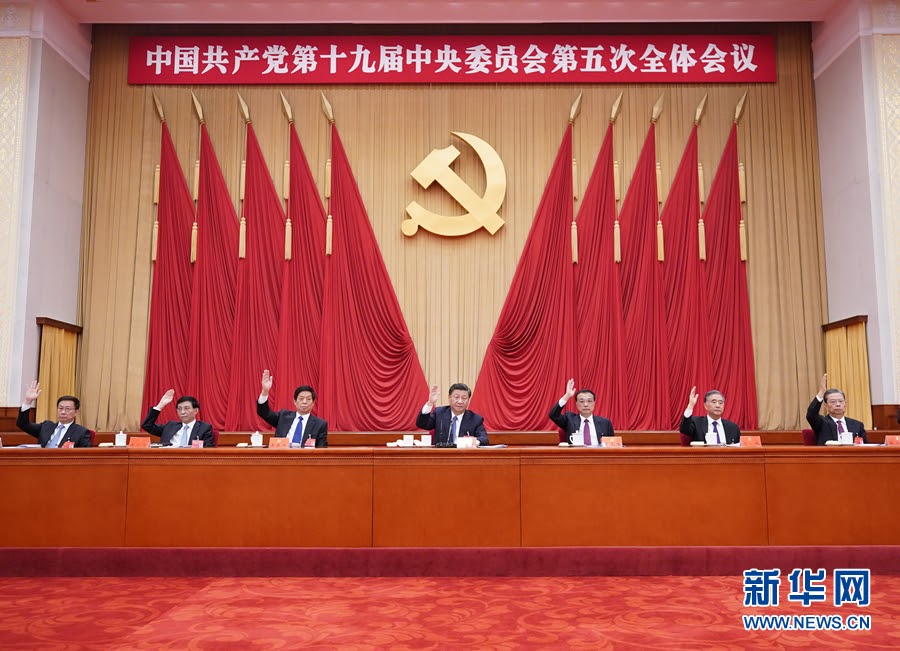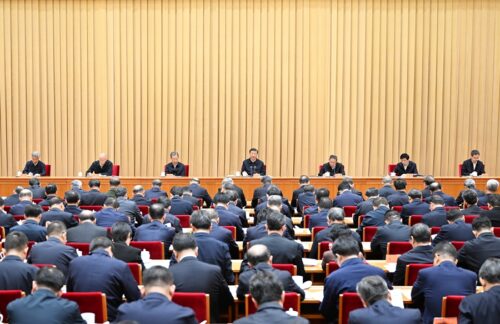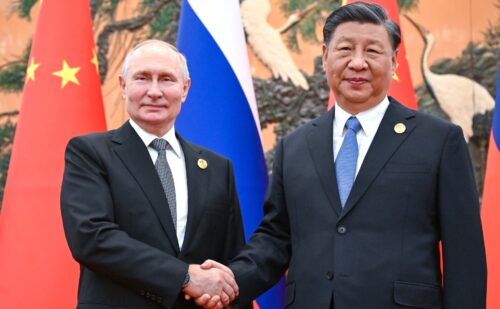China pushes for technological self-sufficiency to power growth through 2035 and hints at Xi Jinping’s long-term plans
China’s leaders said in a policy document that they see a “strategic opportunity” in the coming years for the country to become self-reliant and prosperous. The document also hinted that Xi Jinping wants to rule through at least 2027, the centennial of the formation of the People’s Liberation Army.

After four days of closed-door meetings in Beijing, the annual gathering — formally known as a plenum — of the Central Committee of the Chinese Communist Party has concluded. The end result is a communiqué (gōngbào 公报) laying out broad goals for the country, in this case primarily for the 14th Five-Year Plan (FYP), covering the years 2021–2025.
Most of the document (in Chinese) deals with domestic policy issues and economic development, albeit in only the most unspecific and jargony of terms. This is not unusual, as the details of the 14th FYP won’t be confirmed until next year’s meeting of the National People’s Congress. Between now and then, various government ministries will release details that will put some meat on the bones of the communiqué.
Reuters has a good summary of some of the main points of the communiqué:
- China’s GDP “is expected to exceed 100 trillion yuan ($14.92 trillion) this year. That is just a touch more than in 2019, and puts China on course to narrowly miss a previous goal of doubling GDP in the decade to 2020.” By 2035, China’s per capita GDP will reach “the level of moderately developed nations” (中等发达国家水平 zhōngděng fādá guójiā shuǐpíng).
- “Little was disclosed for the moment on how China would implement the ‘dual circulation’” economic model. (Read more on The China Project about dual circulation.)
- “China would make technological self-sufficiency a ‘strategic support’ for national development, with an aim to achieve major breakthroughs in key technologies by 2035.”
- “China would speed up and push forward green and low-carbon development.” (Read more on The China Project about plans to decarbonize.)
- “China would implement strategies to address the aging population, without elaborating.”
Besides the emphasis on technological self-sufficiency, the international situation was briefly alluded to in one section — but framed optimistically as an “important period of strategic opportunity” (重要战略机遇期 zhòngyào zhànlüè jīyù qī). The communiqué specifically cited a “profound adjustment in the international balance of power” (国际力量对比深刻调整 guójì lìliàng duìbǐ shēnkè tiáozhěng), a phrase that has not appeared before in such a high-level Party document.
Hints at Xi’s political power and intentions for third term
As with other major meetings of Party leadership in recent years, the results of the Central Committee plenum are being closely watched to gauge the relative power and future intentions of the man at the top of the Party apparatus, Xí Jìnpíng 习近平. Since becoming General Secretary in 2012, Xi has accumulated titles and responsibilities, and in 2018 did away with the remaining formal limits on his time in office, which otherwise would have been expected to end in 2022 after two five-year terms.
The past month has seen further moves by Xi to cement his personal decision-making power, the New York Times reports:
Xi has shown how important these plans are to him by taking over the drafting process, a job traditionally left to the premier. Earlier this month, the party released rules [in Chinese] that tighten Mr. Xi’s power to set the policy agenda. The rules appeared designed to prevent dissension over issues like the direction of the economy, said Holly Snape, a postdoctoral fellow at the University of Glasgow who studies Chinese politics.
This year’s communiqué laid out some goals for 2035, which some analysts have seen as “a sign of how long Mr. Xi intends to remain in power.” However, the NYT points out that Party officials have previously “approved a long-term plan in 1995…setting goals up to 2010.”
There is another clue, though. The China Media Project writes:
In the section on modernizing national security and the military toward the end of the bulletin, there is mention of “ensuring the achievement by 2027 of the century-long goal of modernizing the army”…It’s hard not to read this as a statement of Xi Jinping’s personal determination to preside not just over the centennial of the CCP in July next year, but also the centennial of the formation of the People’s Liberation Army on August 1, 1927.
More on the plenum communiqué and the next five years of Chinese governance:
- As the West stumbles, ‘helmsman’ Xi pushes an ambitious plan for China / NYT (porous paywall)
- China vows to build “fully modern army” by 2027 as Beijing policy meeting ends on defiant note / SCMP
- Beijing will formalize its post-growth platform in new Five-Year Plan / MacroPolo
- China politics forecast 2025: Stronger as Xi goes / MacroPolo






